One Pot Coconut Curry Chicken and Rice

This recipe is basically the culinary equivalent of a warm hug from your favorite aunt who somehow always knows exactly what you need.

Picture this: tender, perfectly spiced chicken nestled in a bed of fragrant coconut curry rice that’s absorbed every single drop of those incredible flavors.
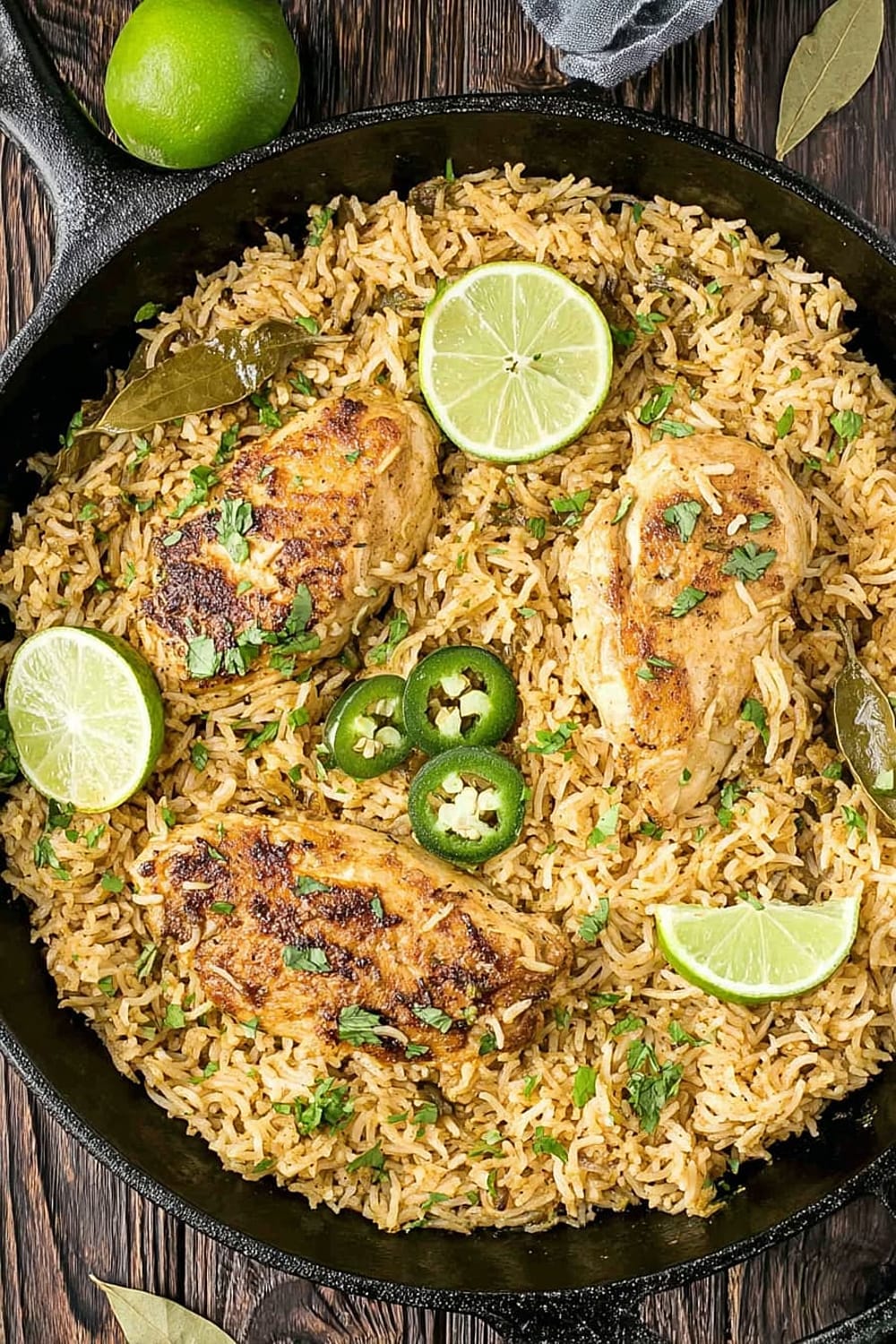
The best part is watching everyone’s faces when they realize you made this restaurant-quality masterpiece in just one skillet with minimal cleanup required.
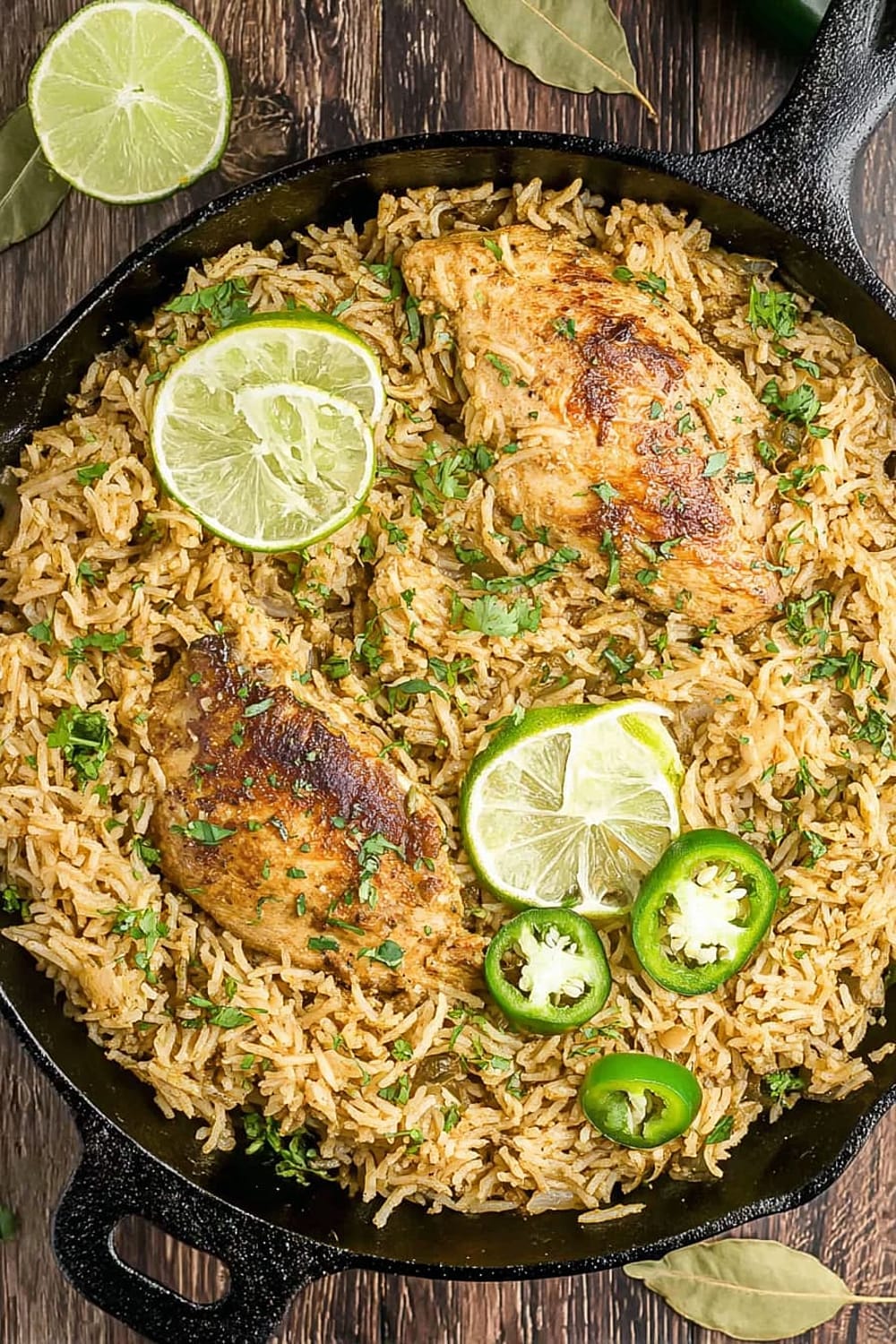
That first bite delivers layers of creamy coconut, warming spices, and perfectly cooked rice that somehow manages to be both comforting and exotic at the same time.

This is the kind of recipe that makes you feel like a kitchen wizard, even if you’re still figuring out how to properly dice an onion without crying.

Fair warning: making this will result in people asking for the recipe, assuming you spent hours slaving over the stove, when really you just followed some simple steps and let the magic happen.

Ingredients
For the Chicken Marinade
- 2 large chicken breasts, skinless and boneless
- 2 tablespoons plain yogurt
- 1 tablespoon vegetable oil
- 1 tablespoon ground paprika
- ½ tablespoon salt
- 1 teaspoon black pepper
For the Coconut Curry Rice
- 2 tablespoons vegetable oil
- 1 cup onions, chopped
- 1 tablespoon garlic, minced
- ½ tablespoon fresh ginger, grated
- 1 jalapeño pepper, sliced (optional)
- 3 bay leaves
- 2 cups long grain white rice, rinsed
- 1 (400 ml) can coconut milk
- 1 tablespoon soy sauce
- 2 tablespoons red curry paste
- ½ cup water
- 1 tablespoon fresh cilantro or parsley, finely chopped
- 2-3 lime wedges

Instructions
Prepare the Chicken
- 1 Combine chicken breasts with marinade ingredients (yogurt, oil, paprika, salt and pepper) in a large mixing bowl. Use a silicone spatula to stir well and coat the chicken completely. The yogurt acts as a tenderizer while the spices create a beautiful golden crust. Cover with plastic wrap and refrigerate for at least 30 minutes or overnight for maximum flavor penetration.
Sear the Chicken
- 2 Heat 2 tablespoons vegetable oil in a large cast iron skillet or heavy-bottomed pan for 2 minutes over medium-high heat until the oil starts to sizzle and shimmer. This visual cue tells you the pan is properly heated. Place the marinated chicken in the skillet and cook for 5 minutes on each side until beautifully browned. The chicken doesn’t need to be fully cooked at this stage since it will finish cooking with the rice. Transfer the chicken to a clean plate and set aside.
Build the Flavor Base
- 3 In the same skillet (don’t clean it – those browned bits are pure flavor gold), add onions, garlic, ginger, jalapeño, and bay leaves. Stir constantly and cook for 2 minutes until fragrant and the onions begin to soften. The aromatics should smell incredible at this point. Add the rinsed rice and stir well to combine, toasting the rice slightly for about 1 minute.
Create the Curry Base
- 4 Pour in the coconut milk and ½ cup water, then bring the mixture to a rolling boil. This should take about 3-4 minutes. Stir in the soy sauce and red curry paste, mixing thoroughly with your spatula to ensure the curry paste is completely dissolved and the rice is evenly coated with the creamy, spiced liquid.
Final Cooking
- 5 Spread the rice mixture evenly into a uniform layer across the bottom of the skillet. Gently nestle the seared chicken pieces back into the rice, pressing them slightly into the mixture. Cover with a tight-fitting lid and reduce heat to medium-low. Simmer for 10 minutes without lifting the lid, until all liquid has been absorbed and the rice is tender.
Finish and Serve
- 6 Remove from heat and let stand, covered, for 5 minutes to allow the rice to fully steam. Remove bay leaves, then sprinkle finely chopped cilantro or parsley on top and add a generous squeeze of fresh lime juice before serving immediately while hot.
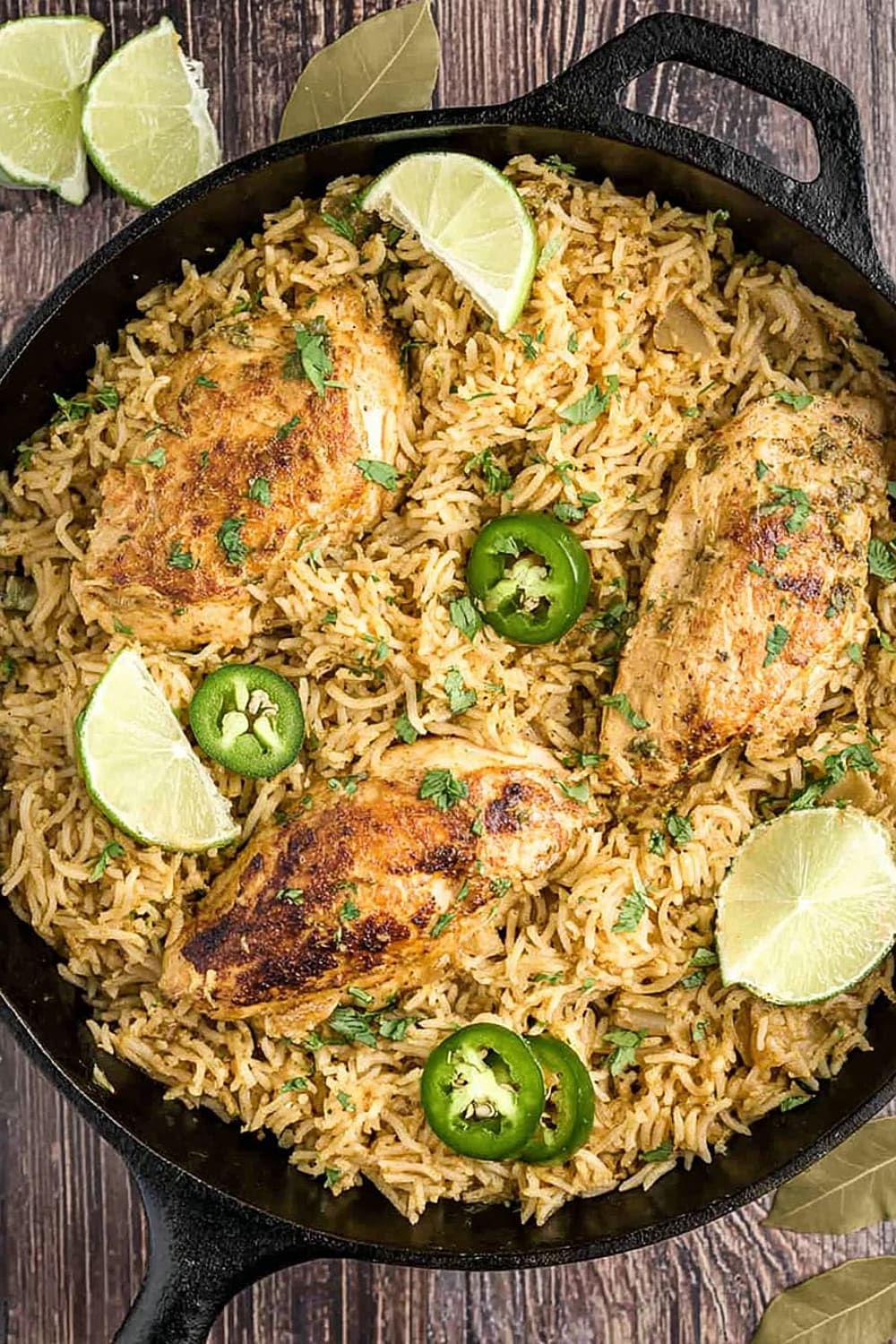
Recommended Equipment and Kitchen Tools
Essential Tools (for best results):
- Large cast iron skillet or heavy-bottomed pan – The heavy bottom ensures even heat distribution and prevents the rice from burning while creating those coveted crispy bits on the bottom
- Silicone spatula – Perfect for stirring without scratching your cookware and getting into corners to prevent sticking
- Sharp chef’s knife – Makes quick work of chopping onions, mincing garlic, and slicing chicken uniformly
- Cutting board with groove – Catches juices when prepping chicken and prevents cross-contamination
Helpful Upgrades:
- Microplane grater – Creates perfectly fine ginger that distributes evenly throughout the dish rather than chunky pieces
- Digital kitchen scale – Ensures precise measurements for consistent results, especially important for rice-to-liquid ratios
- Instant-read thermometer – Takes the guesswork out of checking chicken doneness (should reach 165°F/74°C internal temperature)
Nice-to-Have Options:
- Fine-mesh strainer – Makes rinsing rice quick and thorough, removing excess starch for fluffier results
- Glass mixing bowls – Non-reactive surface is perfect for marinating chicken and won’t absorb odors or stains

Recipe Variations and Dietary Modifications
Protein Variations:
- Chicken thighs → Use bone-in, skin-on thighs for richer flavor; increase cooking time to 15 minutes
- Shrimp or prawns → Add during last 3 minutes of cooking to prevent overcooking
- Firm tofu or tempeh → Cube and marinate the same way; perfect for plant-based version
Spice Level Adjustments:
- Mild version → Reduce curry paste to 1 tablespoon and omit jalapeño
- Extra spicy → Add 1 teaspoon cayenne pepper to marinade and include jalapeño seeds
- Thai-style heat → Substitute red curry paste with green curry paste and add Thai bird’s eye chilies
Vegetable Additions:
- Bell peppers and snap peas → Add with onions for extra crunch and color
- Baby spinach → Stir in during last 2 minutes for added nutrition
- Mushrooms → Sauté sliced mushrooms with the aromatics for earthy depth
Rice Alternatives:
- Brown rice → Increase liquid to 2½ cups total and cooking time to 25 minutes
- Cauliflower rice → Reduce cooking time to 5 minutes for low-carb option
- Jasmine or basmati rice → Creates more aromatic, restaurant-style results

Nutritional Information and Health Benefits
Key Nutritional Highlights:
This one-pot wonder delivers approximately 420 calories per serving with a balanced macronutrient profile. Each serving provides roughly 28 grams of high-quality protein from the chicken, 45 grams of complex carbohydrates from the rice, and 18 grams of healthy fats primarily from coconut milk. The dish is naturally gluten-free and provides about 3 grams of fiber per serving.
Health Benefits of Main Ingredients:
Coconut milk contains medium-chain triglycerides (MCTs) that may boost metabolism and provide quick energy. Fresh ginger offers powerful anti-inflammatory compounds called gingerols that can help reduce muscle soreness and support digestive health. Garlic provides allicin, a compound with antimicrobial properties and potential cardiovascular benefits. Turmeric in the curry paste contains curcumin, a potent antioxidant with anti-inflammatory effects that may support joint health and cognitive function.
Dietary Considerations:
This recipe is naturally dairy-free and gluten-free, making it suitable for many dietary restrictions. The lean chicken breast provides all essential amino acids while keeping saturated fat moderate. The combination of protein, healthy fats, and complex carbohydrates creates a satisfying meal that helps stabilize blood sugar levels and promotes sustained energy.

Smart Swaps and Ingredient Substitutions
Common Substitutions:
- Coconut milk → Heavy cream mixed with 1 teaspoon coconut extract for similar richness
- Red curry paste → 2 teaspoons curry powder plus 1 teaspoon tomato paste and ½ teaspoon red pepper flakes
- Fresh ginger → 1 teaspoon ground ginger (use ¼ the amount when substituting dried for fresh)
- Long grain white rice → Jasmine, basmati, or even short-grain rice work well
Budget-Friendly Swaps:
- Chicken breasts → Chicken thighs cost less and stay more tender during cooking
- Fresh herbs → 1 teaspoon dried cilantro or parsley works in a pinch
- Coconut milk → Mix 1 cup whole milk with 3 tablespoons melted coconut oil
Pantry Emergency Substitutions:
- Plain yogurt → 2 tablespoons buttermilk or 1 tablespoon lemon juice for chicken marinade
- Bay leaves → ½ teaspoon dried thyme for similar earthy notes
- Fresh lime → 2 tablespoons white wine vinegar or lemon juice for acidity
Pro Tips for Substitutions:
- When using dried herbs instead of fresh, add them earlier in the cooking process to allow flavors to develop
- Taste and adjust seasonings when making substitutions, as different brands of curry paste vary significantly in heat and salt content
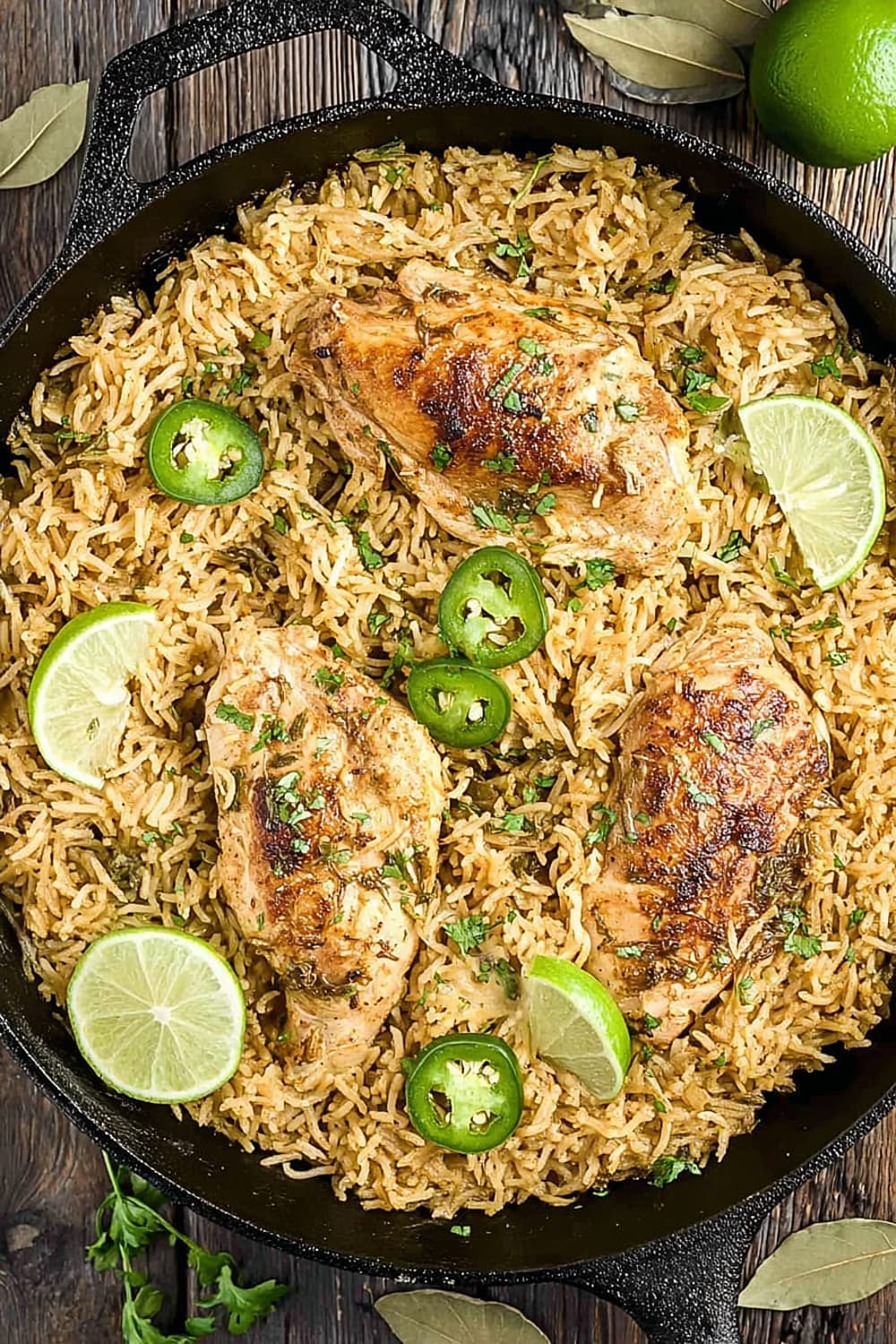
Make It Diabetes-Friendly
Carb Reduction Strategies:
- Replace white rice → Use cauliflower rice to reduce carbs from 45g to 8g per serving
- Portion control → Serve ¾ cup portions instead of full cups to reduce carb load by 25%
- Add fiber → Mix in ½ cup rinsed black beans to slow glucose absorption
Smart Modifications:
- Increase protein ratio → Use 3 chicken breasts instead of 2 to boost protein content
- Vegetable boost → Add 1 cup diced bell peppers and 1 cup broccoli florets to increase volume without significant carbs
- Healthy fats → Sprinkle 2 tablespoons chopped almonds or pumpkin seeds for added protein and healthy fats
Blood Sugar Management Tips:
- Pair with salad → Start meals with a large green salad with olive oil dressing to slow carb absorption
- Timing matters → Serve smaller portions as part of balanced meals rather than as a standalone dish
- Monitor portions → One serving contains approximately 35-40g net carbs with traditional rice
Total Carb Reduction: Using cauliflower rice reduces total carbs by approximately 75% while maintaining the satisfying flavors and textures.
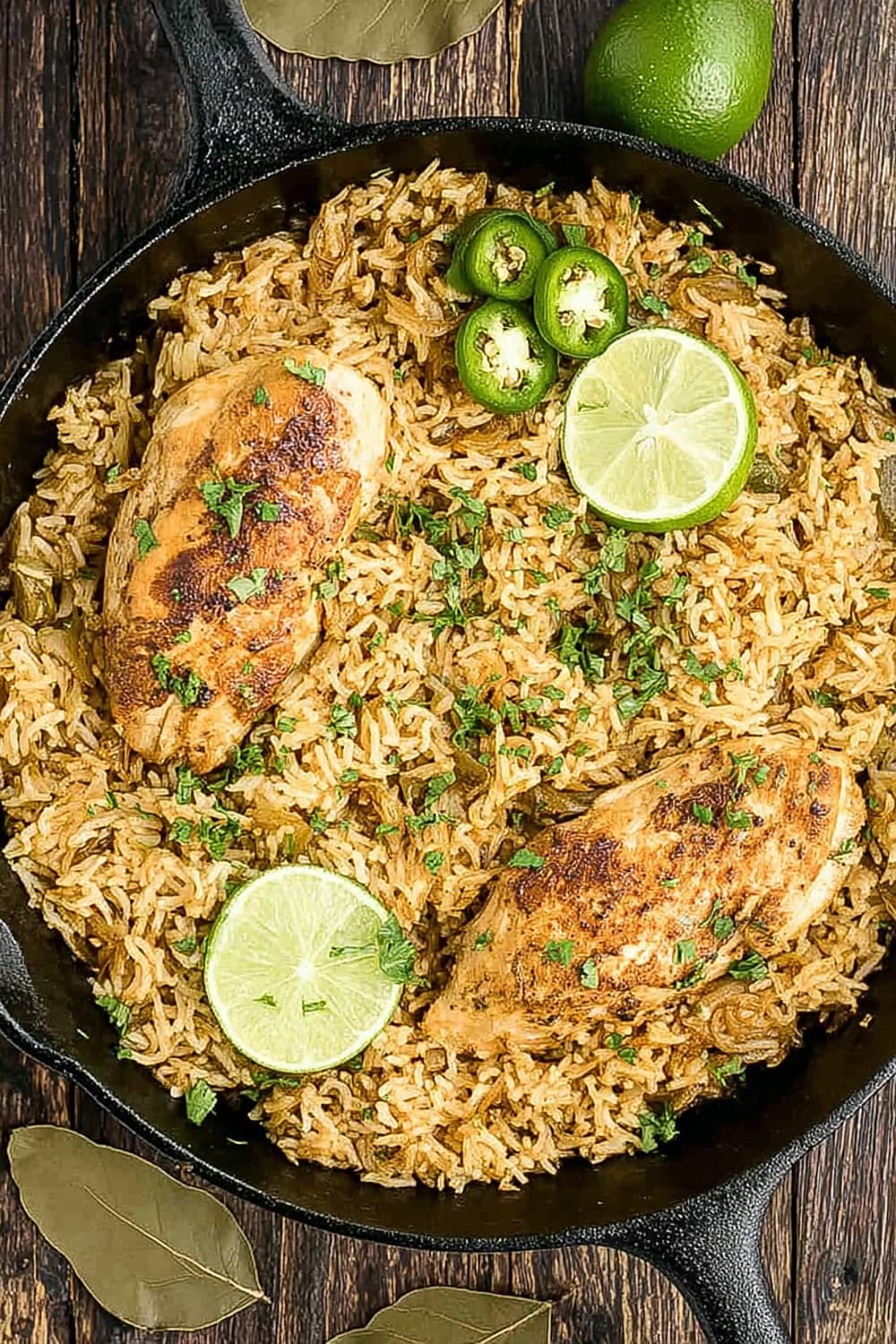
Perfect Pairing Suggestions
Beverage Pairings:
Wine lovers should reach for a crisp Riesling or Gewürztraminer – the slight sweetness balances the curry spice beautifully. For beer enthusiasts, a wheat beer or pale ale complements the creamy coconut flavors without overwhelming the delicate spices. Non-alcoholic options include Thai iced tea, coconut water with lime, or ginger-infused sparkling water for a refreshing contrast.
Side Dish Recommendations:
A crisp cucumber salad with rice vinegar dressing provides cooling contrast to the warm spices. Naan bread or coconut flatbread is perfect for scooping up every last bit of that incredible sauce. Roasted vegetables like Brussels sprouts or green beans add textural variety and nutritional balance. For something lighter, try Asian-style coleslaw with sesame dressing.
Complete Meal Ideas:
Start with coconut shrimp appetizers or spring rolls to continue the Southeast Asian theme. Follow with this curry as the main course, then finish with mango sticky rice or coconut panna cotta for dessert. For casual entertaining, serve family-style with jasmine rice, pickled vegetables, and fresh fruit salad.
Occasion Suggestions:
This dish shines at casual dinner parties, cozy date nights, or weekend family meals. It’s perfect for meal prep Sundays since flavors actually improve overnight. The one-pot nature makes it ideal for camping trips or potluck gatherings where cleanup needs to be minimal.

Pro Tips and Troubleshooting
Professional Techniques:
Toast the rice briefly in the aromatics before adding liquid – this creates individual grains that won’t clump together. Layer flavors by building the curry base slowly, allowing each ingredient to bloom before adding the next. Rest the finished dish for 5 minutes off the heat to allow the rice to fully absorb remaining moisture and flavors to meld.
Common Mistake Prevention:
Don’t lift the lid during the final simmering stage – this releases essential steam needed for proper rice cooking. Rinse rice thoroughly until water runs clear to remove excess starch that can make the dish gummy. Use room temperature chicken for even cooking – cold chicken straight from the fridge can cause uneven browning and temperature drops in your pan.
Storage and Reheating:
Store leftovers in the refrigerator for up to 4 days in airtight containers. Reheat gently in the microwave with a splash of coconut milk or water to restore creaminess. Freezer storage works for up to 3 months – thaw overnight in refrigerator before reheating.
Make-Ahead Strategies:
Marinate chicken up to 24 hours in advance for maximum flavor development. Prep vegetables the night before and store in airtight containers. The entire dish can be assembled and refrigerated for up to 2 hours before the final cooking step.
Recipe Scaling:
This recipe doubles beautifully for larger crowds – just use a bigger skillet or divide between two pans. For smaller portions, halve all ingredients but maintain the same cooking times and temperatures.
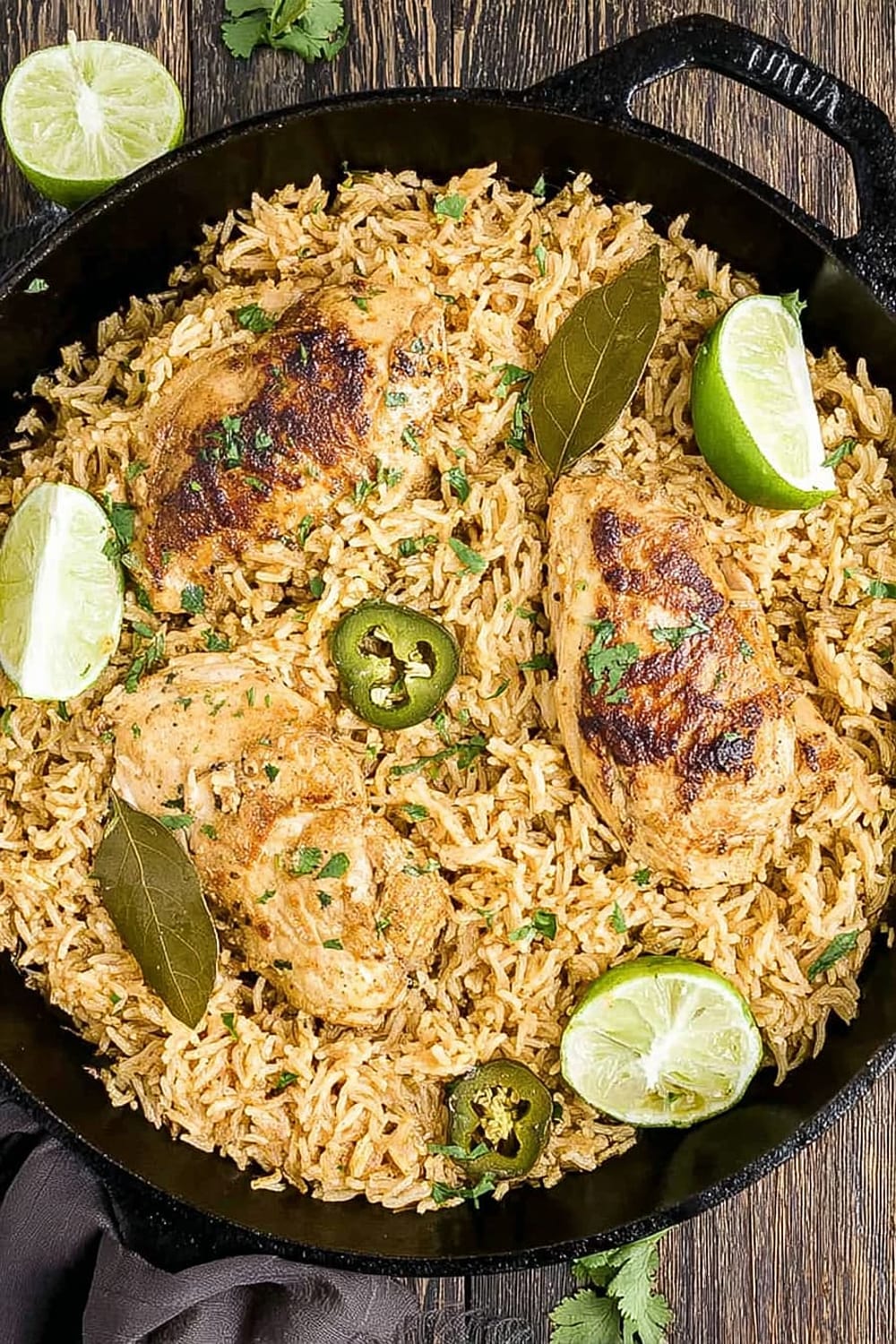
This one-pot coconut curry chicken and rice proves that incredible flavors don’t require complicated techniques or endless cleanup. With its perfect balance of creamy coconut, warming spices, and tender protein, it’s destined to become your new favorite weeknight dinner that feels special enough for company. The beauty lies in its simplicity – everything cooks together, flavors meld beautifully, and you’re left with a restaurant-quality meal that required just one pan and minimal effort.